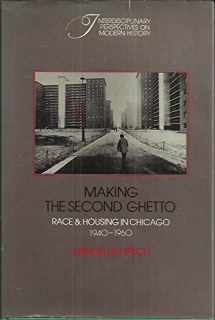
Making the Second Ghetto: Race and Housing in Chicago, 1940–1960 (Interdisciplinary Perspectives on Modern History)
Book details
Summary
Description
This book analyses the expansion of Chicago's Black Belt during the period immediately following World War II. Even as the civil rights movement swept the country, Chicago dealt with its rapidly growing black population not by abolishing the ghetto, but by expanding and reinforcing it. The city used a variety of means, ranging from riots to redevelopment, to prevent desegregation. The result was not only the persistence of racial segregation, but the evolution of legal concepts and tools which provided the foundation for the nation's subsequent urban renewal effort and the emergence of a ghetto now distinguished by government support and sanction. This book not only extends our knowledge of the evolution of race relations in urban America, but adds a new dimension to our perspective on the civil rights era - an age marked by the rise of Martin Luther King, Jr. and the explosion of northern cities in the wake of his assassination.


We would LOVE it if you could help us and other readers by reviewing the book
Book review



